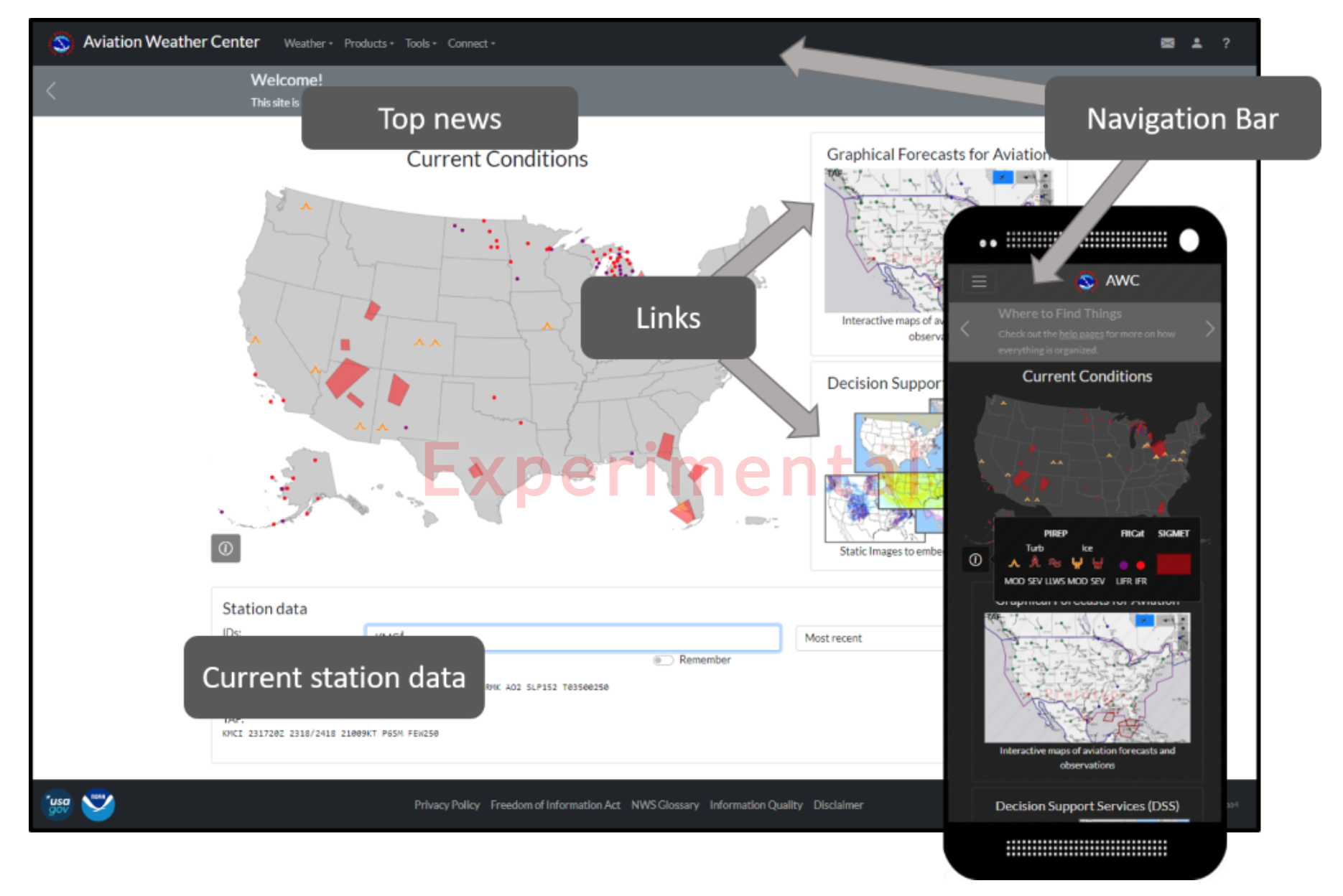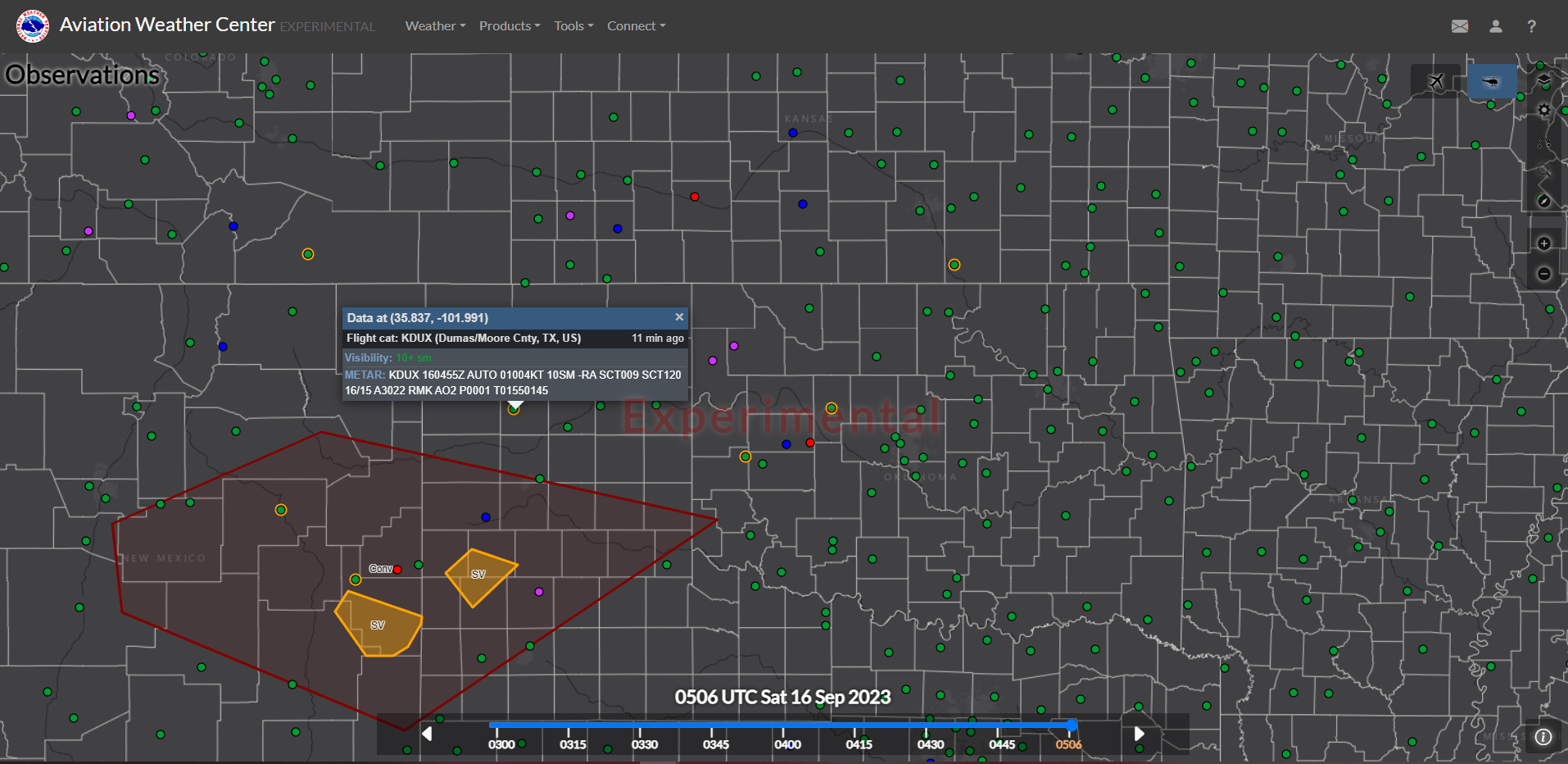|
Oct
09
2023
|
|
Posted 2 years 83 days ago ago by Admin
|
|

Nine years! That’s how long it’s been since the last major update to the National Weather Service Aviation Platform. And from the early beta testing results, the wait will have been worth it. A new AviationWeather.gov is coming soon!
Much has changed in the last decade regarding computer programming capabilities, and all of that technological prowess certainly shows in the new platform. The modernized code provides enhanced stability and improved supportability for users.
To say that I am personally excited about the new and improved platform would be an understatement. I was fortunate to work with the amazing team responsible for the site's redevelopment, sometimes one-on-one, by offering direct feedback, utilizing the beta platform, and making suggestions. I was amazed at the NWS team's responsiveness and openness to suggestions and improvements that would benefit our industry sector. For example, they have agreed to help combat "green-dot syndrome" by creating a new way to show us cloud layers less than 3,000 feet that are listed as FEW or SCT. (See “Weather: Devil in the Details" in the Nov./Dec. issue of RotorPro.)
Why the change to AviationWeather.gov?
This past May, I had the opportunity to speak with Jennifer Stroozas, warning coordination meteorologist, at the NWS Aviation Weather Center in Kansas City. The work done by her and her colleagues is commendable. When asked about the new platform's overarching goal, she unequivocally said, "An improved user experience was our priority." That goal shows in the new product.
Here are just a few of the benefits related to how Stroozas and her team improved the user experience:
- The site was redesigned to be mobile-first to produce the same user experience, whether on a mobile phone, tablet, desktop computer, or large-screen display.
- The menus have been more streamlined, making navigation more intuitive and allowing more significant user configuration.
- Most importantly, many years of customer feedback has been incorporated into the new site.

What are the most significant changes that will impact users of AviationWeather.gov?
I know first-hand how pilots really love change. Yes, I am being facetious, but change is guaranteed in life, especially in our chosen aviation path. Don't fret! Most will find the new platform very intuitive and get the hang of it relatively quickly with a bit of site navigation. Here are the most significant changes the helicopter industry will find most noticeable.
- The Helicopter Emergency Medical Services Tool (HEMS) is now integrated into the main Graphical Forecasts for Aviation (GFA) interface as the GFA-Low Altitude (GFA-LA) tool by clicking on the helicopter icon. So, when you go to the "main" page, look for the icons in the top right and simply click the helicopter icon. The "low altitude" mode is more suited for us and provides a one-to-five-hour forecast up to 5,000 feet. The airplane icon, on the other hand, is considered the "general aviation mode" and provides forecasts of one hour to 18 hours up to 48,000 feet.
- Night shift lovers can rejoice because dark mode is now available. This new feature quickly became one of my favorites of the new platform.
- Migration from individual products to interactive GFA display, allowing the ability to overlay fronts, observations, and forecast products with full-screen display capability.

Overall, users will find the new site with more streamlined menus and more intuitive navigation. Recognizing the drastic growth of mobile phone and tablet use over the past decade, the NWS has delivered a tablet-friendly platform that will surely enhance the product's usability. Hats off to the folks at the NWS; well done!
READ MORE ROTOR PRO: https://justhelicopters.com/Magazine
WATCH ROTOR PRO YOUTUBE CHANNEL: https://buff.ly/3Md0T3y
You can also find us on
Instagram - https://www.instagram.com/rotorpro1
Facebook - https://www.facebook.com/rotorpro1
Twitter - https://twitter.com/justhelicopters
LinkedIn - https://www.linkedin.com/company/rotorpro1